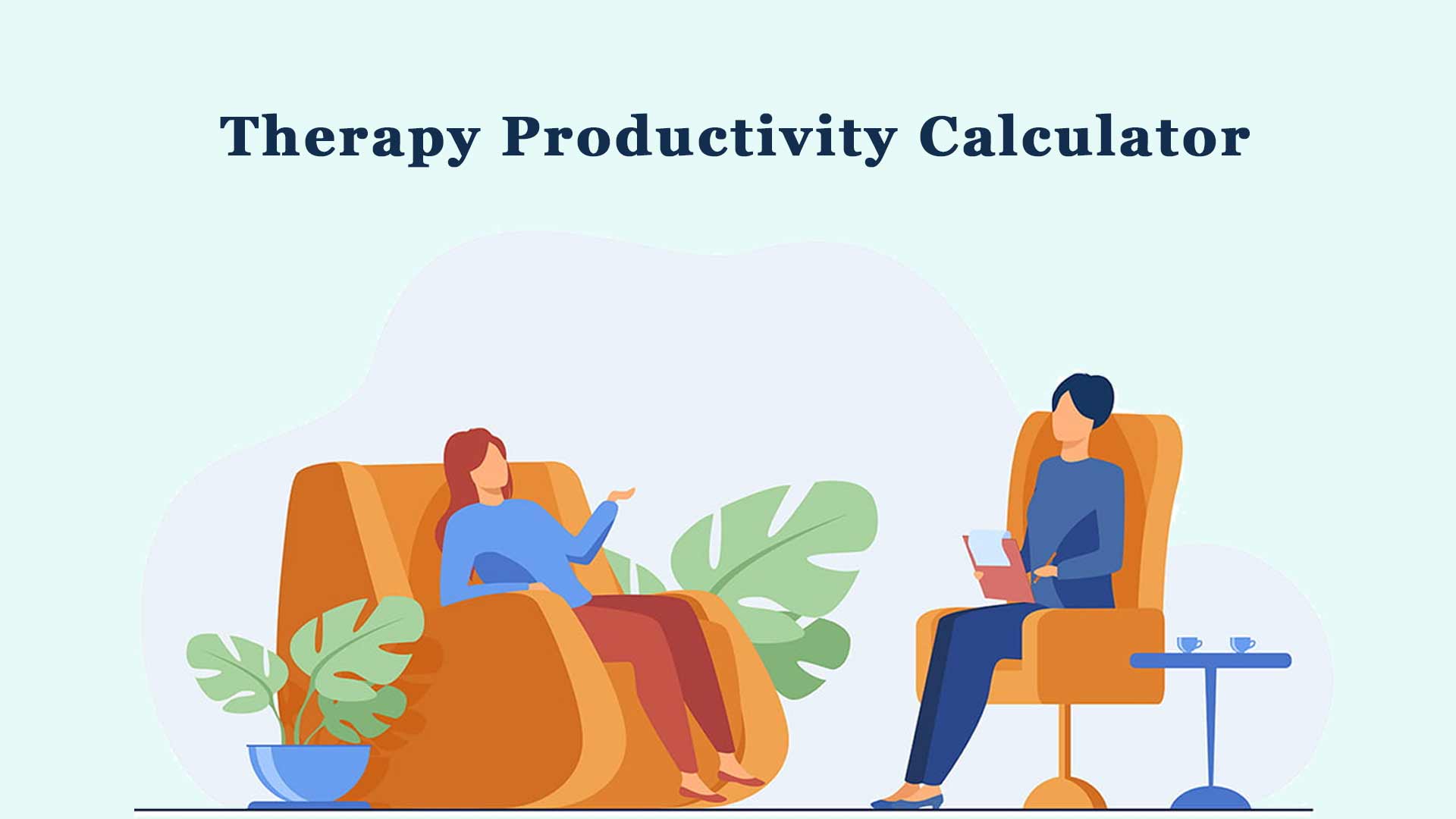Welcome to our Therapy Productivity Calculator! This powerful tool allows therapy professionals to assess their productivity by comparing the time spent actively engaged with patients to the total time available. Gain insights, identify areas for improvement, and optimize your therapy practice with our user-friendly calculator. Try the Therapy Productivity Calculator now.
What is a therapy productivity calculator?
A therapy productivity calculator is a tool used to measure and evaluate the productivity of therapy professionals, such as psychologists, counselors, or physical therapists. It helps determine the efficiency and effectiveness of their time spent with patients or clients.
The calculator typically takes into account two key variables:
- Minutes spent with patients (MP): This represents the actual time spent in direct interaction with patients, providing therapy or counseling services.
- Minutes spent clocked in (MC): This refers to the total time the therapist is logged in or available for work, including patient sessions, administrative tasks, documentation, and other related activities.
The formula used in the therapy productivity calculator is:
Productivity (%) = (MP / MC) * 100
By inputting the values for MP and MC into the calculator, it calculates the therapy productivity percentage. This percentage represents the proportion of time spent actively engaged with patients compared to the total time available.
Therapy productivity calculators can be customized to incorporate additional factors, such as non-patient time, breaks, interruptions, or different types of therapy, based on the specific context and goals of the therapy practice. This enables a more comprehensive assessment of productivity and helps identify areas for improvement or optimization in therapy workflows.
How does this therapy productivity calculator work?
The therapy productivity calculator helps measure the productivity of therapy professionals by comparing the time they spend actively engaged with patients to the total time they have available for work.
To use the calculator, you simply enter two pieces of information:
- “Minutes spent with patients” (MP): This is the amount of time spent directly interacting with patients, providing therapy or counseling services.
- “Minutes spent clocked in” (MC): This represents the total time the therapist is available for work, including patient sessions, administrative tasks, and other related activities.
Additionally, you can provide more specific details to further refine the calculation:
- “Non-patient time”: This refers to the time spent on tasks like paperwork, documentation, or consultation that are not directly involved in patient interactions.
- “Break time”: Any scheduled breaks or time allocated for rest or personal needs.
- “Interruption time”: Time lost due to unexpected interruptions or distractions during the work period.
By including these additional factors, the calculator provides a more accurate productivity assessment.
Algorithm of this therapy productivity calculator
Once you’ve entered the required information, the calculator will determine the adjusted total time available for productive work by subtracting non-patient time, break time, and interruption time from the total clocked-in time. It then calculates the therapy productivity percentage by dividing the time spent with patients by the adjusted total time available and multiplying it by 100.
Moreover, the calculator displays the resulting therapy productivity percentage, which indicates the efficiency of the therapist in using their available time to actively engage with patients.
However, it’s important to note that this calculator serves as a tool for self-assessment and analysis and should not be the sole determinant of a therapist’s effectiveness. Various factors can influence therapy productivity, and it’s crucial to consider other qualitative measures, such as patient satisfaction and treatment outcomes, to gain a comprehensive understanding of the therapist’s performance.
Data sources for this therapy productivity calculator
For this therapy productivity calculator, we have collected data from various sources. Mainly we collected the formula and data from online. Moreover, we took help from several therapists to make this app. For that purpose, we are always grateful to Sheila Mitchell and Simran Lund. Apart from that, after creating this calculator, we took feedback from the people who usually go to therapy.
How can therapy professionals improve their productivity based on the results obtained from the therapy productivity calculator?
Based on the results obtained from this therapy productivity calculator, therapy professionals can take several steps to improve their productivity:
- Time management: Analyze the time spent on non-patient activities, such as administrative tasks or documentation, identified through the calculator. Look for opportunities to streamline and optimize these tasks to maximize the time available for direct patient engagement.
- Prioritization: Assess the breakdown of time spent with patients versus non-patient activities. Identify areas where non-patient time could be reduced or reallocated to prioritize patient-related tasks, ultimately increasing the overall productivity.
- Workflow optimization: Examine the efficiency of current workflows and processes. Identify any bottlenecks, redundancies, or inefficiencies that hinder productivity. Explore strategies to streamline workflows, automate tasks, or implement technology solutions that can help optimize the therapy practice.
- Continuing education and training: Invest in professional development to enhance skills and knowledge. This can improve overall efficiency, effectiveness, and confidence in therapy sessions, ultimately boosting productivity.
- Collaboration and teamwork: Seek opportunities to collaborate with colleagues or engage in team-based approaches to enhance productivity. Sharing best practices, dividing workload, or leveraging each other’s strengths can lead to improved productivity outcomes.
- Self-reflection and feedback: Regularly evaluate personal performance and seek feedback from supervisors, peers, or clients. Reflecting on areas for improvement and actively implementing feedback can contribute to enhancing productivity.
- Setting realistic goals: Establish achievable goals based on the insights gained from the productivity calculator. Break down larger objectives into smaller, manageable tasks to stay motivated and maintain productivity momentum.

